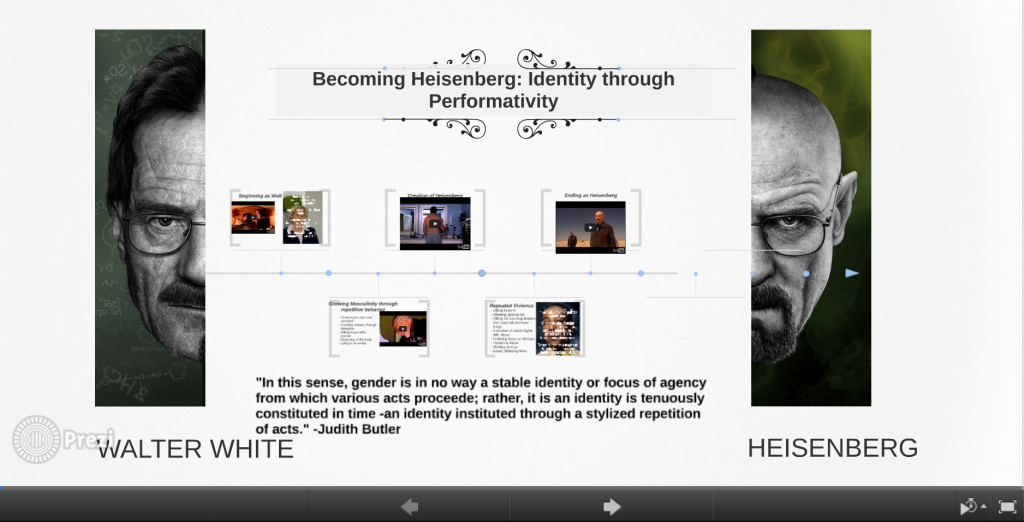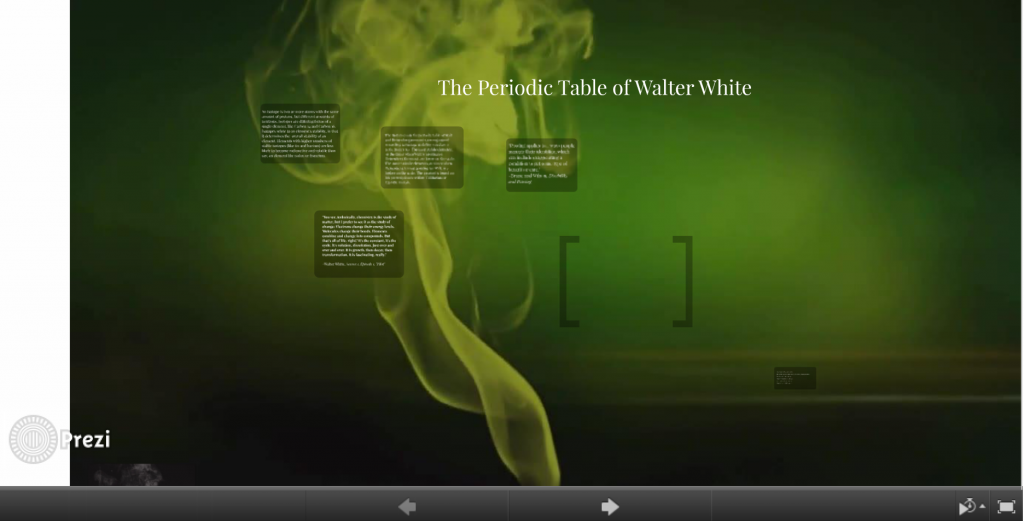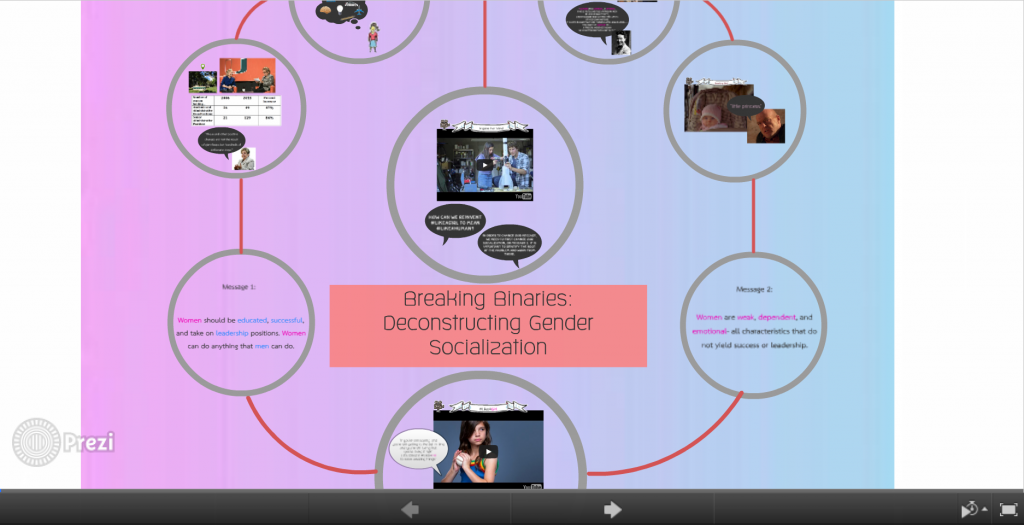Case Study in Brief
Course: ENG306
Instructor: Joanna Johnson
Number of Students: 7
Semester: Spring 2015
Duration: Spring Semester
Purpose
The objective of implementing a multimodal project design into any course aims to strengthen both critical thinking and writing communication skills. By using such an approach, students are exposed to both low stakes and high stakes. Such stakes assist students in developing skills and strategies which foster clear, concise, sound writing and communication, as well as increase the ability to work with scholarly and complex sources.
Student Benefits
Multimodality:
- Constructive Criticism Peer Evaluation, rubric based
- Scaffolding
- Increase collaboration
- Promote digital literacy
- Combination of multiple ways of Communication
Technology
- Adobe Illustrator
- Prezi
- Youtube
- Skills Utilized
- Organization
- Proofreading/editing
- Collaboration
Target Skills
- Communication
- Collaboration
- Student responsibility
- Organization
- Learning ownership
|
Course Design and Implementation
A semester long case study was conducted using the multimodal approach at the University of Miami. The purpose of the course was to write and remediate a semester long project. In order for students to produce the final assignment of a remediated artifact, they first needed to created an original 15+ page written document that was the culmination of both scholarly and sophisticated sources. The goal of the original document demonstrated each student’s depth and comprehension of the . During this segment of the course, the writing portion consisted of multiple drafts, once each draft had been completed, peer reviewers would then complete a comprehensive evaluation which was guided by a set of 12 specific questions. Peer Review Guidance Documentation and Questions are viewable here. Once completed, students then pitched their direction of their remediation project, once confirmed, students began to choose which mode of technology best suite their needs. Students were then asked to transition their written document into an artifact. The goal of the artifact was to create an item that summarized the original 15+ page written document in the form of a visual interpretation. The communication of by various modes that elicit organization of: linguistic, visual, spatial, gestural and aural. Prior to remediation, students first pitched their ideas to their professor. Once their pitch and direction had been confirmed, students began to choose which mode of technology best suite them to create their remediated artifact. Once completed, students then broke into groups to receive constructive criticism from their peers. Such evaluations were taken into consideration to complete the final version of their works. Students then presented their material to the entire class, each of the audience members were given a rubric to evaluate. See rubric.
Student Artifacts
Sydney: Breaking Binaries: Deconstructing Gender Socialization
Hannah: Periodic Table of Walter White
Michael: Becoming Heisenberg: Identity Through Performativity
Anna: Consequentialist Evaluation






